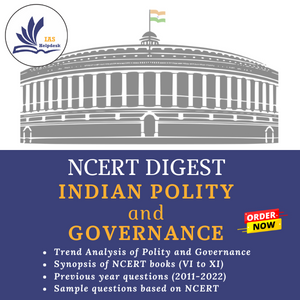Chemical Weapons
Description
"Understanding Chemical Weapons: Types, Risks, and the
Chemical Weapons Convention"
Description: "Explore the types of chemical agents, their effects, and the global efforts to combat their use through the Chemical Weapons Convention. Learn about key provisions and the mission to eliminate these deadly weapons."
Chemical Weapon
A Chemical Weapon (CW) is a specialized munition that uses chemicals formulated to inflict death or harm on human beings. It releases toxic gas, liquid or solid that can poison people and the environment.
Because they are relatively cheap and easy to produce, chemical weapons are referred to as the “poor man’s bomb”. Even though modern munitions, through precision of application and specialised use, can cause catastrophic damage, chemical weapons trigger unmatched horror and leave deep psychological scars.
Various types of Chemical Agents:
The toxic component of a chemical weapon is called its ‘chemical agent’. Based on their mode of action (i.e. the route of penetration and their effect of on the human body), chemical agents are commonly divided into several categories: choking, blister, blood, nerve and riot control agents.
The most commonly used chemical agents include:
Soman: With Sarin and another chemical weapon known as Lewisite — a blistering agent — the nerve agent Soman is said to have made up much of the former Soviet Union's chemical arsenal. It is considered a volatile substance effective mainly through inhalation.
Sarin: It is a colourless, odourless nerve gas extremely potent - even trace amounts can kill humans- but its threat after being released in the atmosphere is short lived. The UN has confirmed the use of Sarin in the deaths of 87 people in Idlib province of Syria on April 4, 2017.
VX: VX, or O-ethyl S-diisopropylaminomethyl methylphosphonothiolate, is brownish in liquid form, and its vapors are odorless. VX agents are among the most toxic substances known. Mere droplets can kill. It can remain on material, equipment and terrain for long periods. Uptake is mainly through the skin but also through inhalation of the substance as a gas or aerosol.
Mustard gas: Possibly the world’s most commonly used chemical weapon, it was widely used in World War I, and gets its name from its distinctive odour of rotten mustard. It is slow acting, and only about 5% to 10% of people exposed to it usually die.
Hydrogen Cyanide: It is a commercially produced "blood agent" used in plastic and organic chemical products in many parts of the world. It is a colorless vapor at normal temperatures with a smell likened to bitter almonds. Hydrogen cyanide has high toxicity and in sufficient concentrations rapidly leads to death.
Tabun: It is a colourless or brownish as a liquid and odourless as a vapour. Tabun, also an organophosphate like many pesticides, is considered among the easiest of nerve gases to manufacture, even in the non-industrialized world.
Chemical Weapons Conventions:
Considering the huge casualties faced during World War I and widespread public outrage, the Geneva Protocol was signed in 1925, which prohibited the use of chemical weapons in warfare.
While a welcome step, the Protocol had a number of significant shortcomings, including the fact that it did not prohibit the development, production or stockpiling of chemical weapons. Also problematic was the fact that many States that ratified the Protocol reserved the right to use prohibited weapons against States that were not party to the Protocol or as retaliation in kind if chemical weapons were used against them.
The Cold War period saw significant development, manufacture and stockpiling of chemical weapons. By the 1970s and 80s, an estimated 25 States were developing chemical weapons capabilities. But since the end of World War II, chemical weapons have reportedly been used in only a few cases, notably by Iraq in the 1980s against the Islamic Republic of Iran.
Convention on the Prohibition of the Development, Production, Stockpiling and Use of Chemical Weapons and on Their Destruction:
The Chemical Weapons Convention (CWC) is an international treaty that aims to eliminate the production, stockpiling, and use of chemical weapons and their precursors. The convention came into effect on April 29, 1997, and is overseen by the Organization for the Prohibition of Chemical Weapons (OPCW), which is based in The Hague, Netherlands.
Key points about the Chemical Weapons Convention (CWC) include:
Ban on Chemical Weapons: The CWC prohibits the development, production, acquisition, stockpiling, retention, and transfer of chemical weapons. It also bans the use of these weapons.
Destruction of Stockpiles: Signatory countries that possess chemical weapons are required to destroy their stockpiles in a safe and verifiable manner. This process is monitored by the OPCW to ensure compliance.
Verification and Inspections: The OPCW conducts regular inspections and verification activities to ensure that countries are adhering to the treaty's provisions. This includes inspecting declared chemical facilities and conducting investigations in response to alleged use of chemical weapons.
Declaration Requirements: Member states must provide detailed declarations about their chemical-related activities, including production facilities, stockpiles, and any research and development programs related to chemicals.
Assistance and Protection: The convention includes provisions for member states to provide assistance and protection to each other in case of chemical weapons attacks or accidents involving toxic chemicals.
International Cooperation: The CWC promotes international cooperation in the peaceful use of chemistry, including scientific research, technological advancements, and sharing expertise.
Universality: The convention encourages all nations to join and adhere to its principles to create a world free from chemical weapons.
Sanctions and Measures: The convention includes measures to address non-compliance, including the possibility of imposing sanctions on countries that violate its provisions.
The Chemical Weapons Convention is a significant step towards preventing the use of chemical weapons and promoting global security. Its establishment and ongoing implementation reflect international efforts to safeguard humanity from the devastating consequences of chemical warfare.

